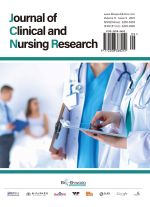Exercise-Induced Syncope During Treadmill Testing in a Sedentary Woman: A Case Report
Abstract
Vasovagal syncope (VVS), which is triggered by physical exertion, is typically observed in athletes or patients with structural heart disease. There have been few reported cases among sedentary individuals. This case report details the experience of a 42-year-old sedentary woman who fainted during a treadmill stress test. Despite the absence of abnormalities in baseline cardiac and neurological evaluations, the patient exhibited sinus arrest (lasting 5–12 seconds) with significant ST-segment depression during haemodynamic collapse. Comprehensive assessments, incorporating coronary angiography, echocardiography, cranial computed tomography (CT) and biochemical testing, excluded the presence of structural or ischemic heart disease, arrhythmogenic syndromes and cerebrovascular disorders. A Calgary Syncope Symptom Score of 3 confirmed the diagnosis of VVS, a diagnosis that was further substantiated by the patient's symptoms resolving spontaneously when she was positioned supine. This case demonstrates that exercise-induced syncope can occur in individuals who are physically unfit and have no cardiac abnormalities. Transient ST-segment changes in such cases reflect autonomic nervous system dysfunction rather than myocardial ischaemia. It is incumbent upon clinicians to consider a neurocardiogenic mechanism in sedentary patients presenting with exertional syncope despite a negative standard cardiac evaluation.
References
Parry SW, Tan MP, 2010, An Approach to the Evaluation and Management of Syncope in Adults. BMJ (Clinical Research Ed), 340: c880.
Andreu-Caravaca L, Ramos-Campo DJ, Abellán-Aynés O, et al., 2022, 10-Weeks of Resistance Training Improves Sleep Quality and Cardiac Autonomic Control in Persons With Multiple Sclerosis. Disability and Rehabilitation, 44(18): 5241–5249.
Silva LRBE, Zamunér AR, Gentil P, et al., 2017, Cardiac Autonomic Modulation and the Kinetics of Heart Rate Responses in the On- and Off-Transient During Exercise in Women With Metabolic Syndrome. Frontiers in Physiology, 8: 542.
Bőhm A, Kiss RG, Bachmann B, et al., 2014, Exercise-Induced Vasovagal Syncope. Heart Rhythm, 11(6): 1089–1090.
Romme JJ, van Dijk N, Boer KR, et al., 2009, Diagnosing Vasovagal Syncope Based on Quantitative History-Taking: Validation of the Calgary Syncope Symptom Score. European Heart Journal, 30(23): 2888–2896.
Shen WK, Sheldon RS, Benditt DG, et al., 2017, 2017 ACC/AHA/HRS Guideline for the Evaluation and Management of Patients With Syncope: A Report of the American College of Cardiology/American Heart Association Task Force on Clinical Practice Guidelines and the Heart Rhythm Society. Journal of the American College of Cardiology, 70(5): e39–e110.
Sneddon JF, Scalia G, Ward DE, et al., 1994, Exercise Induced Vasodepressor Syncope. British Heart Journal, 71(6): 554–557.
Kosinski D, Grubb BP, Kip K, et al., 1996, Exercise-Induced Neurocardiogenic Syncope. American Heart Journal, 132(2): 451–452.
Elashery AR, Rickard JW, Zakaria S, 2014, Exercise-Induced Syncope in a Sedentary Woman. Texas Heart Institute Journal, 41(6): 631–633
Calkins H, Seifert M, Morady F, 1995, Clinical Presentation and Long-Term Follow-Up of Athletes With Exercise-Induced Vasodepressor Syncope. American Heart Journal, 129(6): 1159–1164.
Colivicchi F, Ammirati F, Santini M, 2004, Epidemiology and Prognostic Implications of Syncope in Young Competing Athletes. European Heart Journal, 25(19): 1749–1753.
Colivicchi F, Ammirati F, Biffi A, et al., 2002, Exercise-Related Syncope in Young Competitive Athletes Without Evidence of Structural Heart Disease. Clinical Presentation and Long-Term Outcome. European Heart Journal, 23(14): 1125–1130.
Grubb BP, Karabin B, 2012, Syncope in the Athlete. Herzschrittmachertherapie & Elektrophysiologie, 23(2): 72–75.
Torabi P, Rivasi G, Hamrefors V, et al., 2022, Early and Late-Onset Syncope: Insight Into Mechanisms. European Heart Journal, 43(22): 2116–2123.
Longo S, Legramante JM, Rizza S, et al., 2023, Vasovagal Syncope: An Overview of Pathophysiological Mechanisms. European Journal of Internal Medicine, 112: 6–14.
Zhao Z, Wang R, Gao L, et al., 2025, Motor Induced Syncope After Cerebral Infarction: A Case Report and Literature Review. SAGE Open Medical Case Reports, 13: 2050313X251342060.


